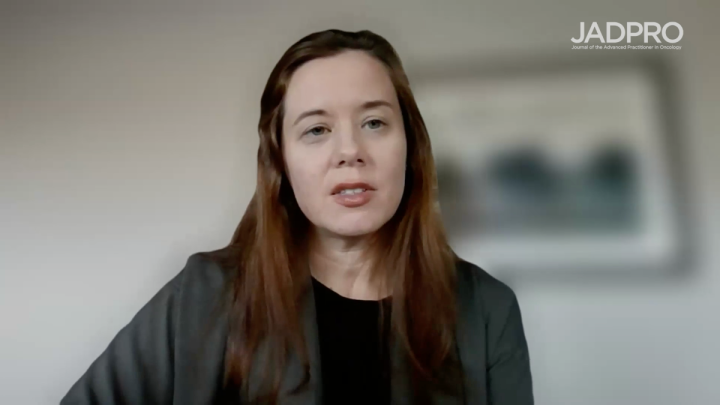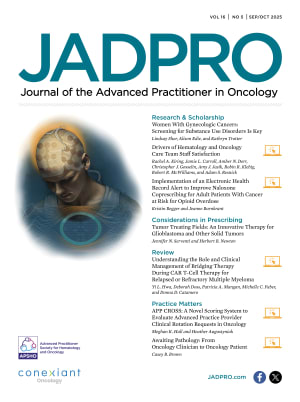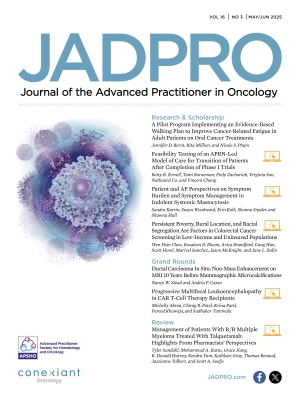Transcript
My name's Nicole. I'm a nurse practitioner. I've worked in a sarcoma patient population for a little over two years now. I have experience treating desmoid tumors. I find that in treating desmoid tumors it's very helpful to approach the patient conversation both in a shared decision-making model and explaining what the desmoid tumor is and how it works in their body and how we'll try and manage both symptoms of the desmoid tumor and if they choose to go on treatment, how we manage side effects of those treatment options.
The two most common treatment options that I see for desmoid tumor patients are both sorafenib and nirogacestat. Nirogacestat is newer in the last 12 months or calendar year. Both sorafenib and nirogacestat have experience in treating desmoid tumors. In my patient population, I do not have much experience with referring for both radiation or surgical intervention.
In reference to the NCCN guidelines, the NCCN guidelines are great to outline the treatment of desmoid tumors and how to manage surveillance as well as possible referral for radiation or surgical intervention depending on the morbidity of the location of the desmoid tumor. My experience of desmoid tumors involves both the abdominal area as well as extremities and some in the paraspinal location as well.
While patients are being treated for desmoid tumors, I find that the most common side effect toxicities that I deal with in managing can range from diarrhea, nausea, skin rash, and managing electrolyte and liver abnormalities in lab values. In the treatment of desmoid tumors, I find that patient education is key, both in education that we provide to the patients about the desmoid tumor itself and how it affects their day-to-day life.
Pain is a common complaint when patients first come to us with desmoid tumors, as well as how we can help them with either nirogacestat or sorafenib to help manage their pain and their side effects while on medication. My key takeaway for both diagnosis and possible treatment of desmoid tumors is in review of the NCCN guidelines understanding that observation is an appropriate first-line management style for treating desmoid tumors. In my practice, we typically scan patients of the affected extremity or location of the desmoid tumor somewhere between every 3 to 6 months with either CT or MRI imaging.
I have experience with scanning patients on a 4-month schedule if they are not on any treatment and making that shared decision with both the patient and the provider in deciding when is an appropriate time to start treatment if pain is affecting their activities of daily living, making it uncomfortable to complete activities that they need to perform in their everyday life, or if it's causing significant symptom burden leading to possible bowel obstruction or limiting movement of that extremity.
In deciding this with the patient, it would be appropriate to discuss with the patient and the provider on their scan interval what is documented progression, if that's greater than 20% on radiology imaging, or if that's when the patient will reach out to the treating team that they would like to consider going on a treatment option based on the significant side effects or symptom morbidity or mortality that they're experiencing based on their desmoid tumor location.










